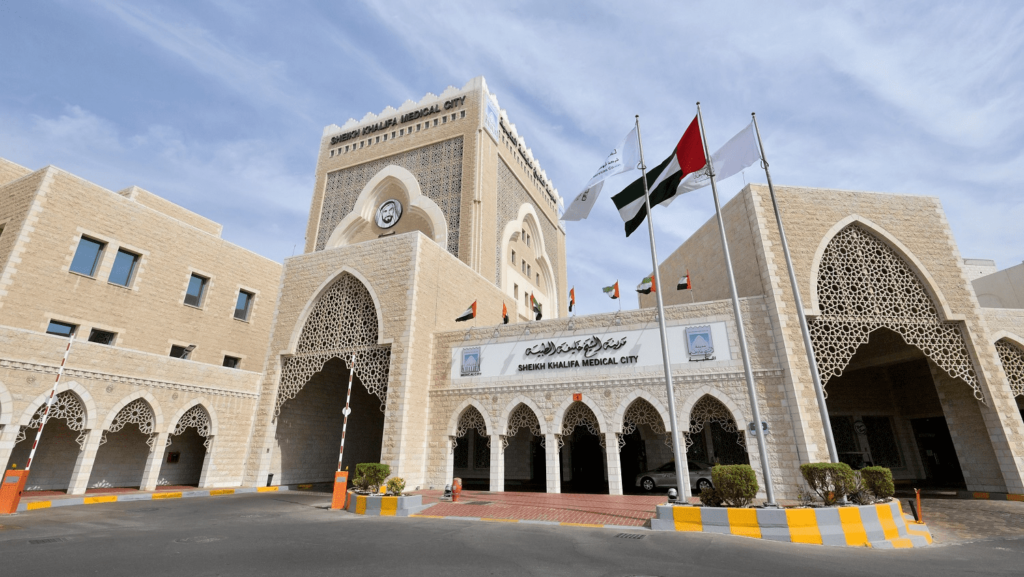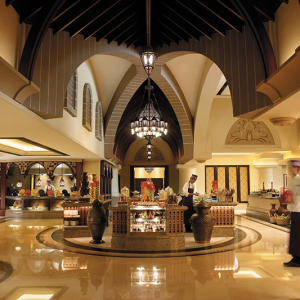It’s 3:00 AM at Sheikh Khalifa Medical City (SKMC), and the Emergency Department is buzzing with quiet intensity. Nurses move swiftly through the brightly lit corridors, doctors consult each other in hushed tones, and every second counts. Located in the heart of Abu Dhabi, the SKMC Emergency Department is one of the most advanced and busiest emergency units in the UAE — and possibly the entire region.
With more than 120,000 emergency visits each year, this department is a critical part of the UAE’s healthcare infrastructure. But what really goes on behind those sliding doors? And why do thousands of patients trust SKMC with their lives every single day?
A Vital Part of the Nation’s Healthcare
SKMC is managed by SEHA (Abu Dhabi Health Services Company), which runs public hospitals and clinics across the Emirate of Abu Dhabi. The Emergency Department here operates 24/7, offering life-saving services to patients of all ages, from newborns to the elderly.

According to hospital officials, the department is designed to handle everything from minor injuries to severe trauma cases. Whether someone comes in with chest pain, a broken bone, or the effects of a major car accident, the emergency team is trained and equipped to respond immediately.
Dr. Amal Al Zeyoudi, a senior emergency physician at SKMC, says the mission is simple but powerful: “We are here to save lives. Every case matters. Whether big or small, we treat everyone with the same urgency.”

High-Tech Meets Human Touch

One of the standout features of SKMC’s Emergency Department is its use of cutting-edge medical technology. From portable ultrasound machines to advanced diagnostic imaging tools, every corner of the department is equipped to ensure that diagnosis and treatment happen fast — often within minutes.
But technology alone doesn’t make a difference unless there are people who know how to use it. The emergency staff at SKMC includes board-certified emergency physicians, trauma surgeons, pediatric emergency doctors, nurses, and support staff, many of whom have international training and experience.
“Technology is only one side of the coin,” says Nurse Fatima Al Mazrouei, who has worked at SKMC for over eight years. “What really matters is how we care. Patients remember how we made them feel safe and cared for — not just the machines.”
A Surge in Demand
Over the past few years, the demand for emergency services at SKMC has grown steadily. Several factors contribute to this trend: a growing population in Abu Dhabi, increasing road accidents, lifestyle diseases like heart conditions and diabetes, and even seasonal flu outbreaks.
In 2023 alone, the Emergency Department saw a 15% increase in patient visits compared to the previous year. Yet despite the rising numbers, patient care has not been compromised.
“Our average wait time is under 15 minutes for critical cases,” says Dr. Al Zeyoudi. “That’s something we’re proud of, and we constantly work to improve it further.”
Triage: The Front Line of Emergency Care

When patients first arrive at SKMC’s Emergency Department, they go through a process called triage — a system that prioritizes cases based on urgency.
Trained triage nurses assess each patient’s condition, assigning them a level from 1 (most critical) to 5 (least urgent). This ensures that the most serious cases receive immediate attention, while others may wait a bit longer depending on the situation.
“The goal is fairness and efficiency,” explains triage supervisor Mohammed Hassan. “It’s not about who came first, but who needs help the fastest.”
Real-Life Stories from the ER
Behind the statistics and sterile equipment are real human stories. One such story is that of 37-year-old Ali R., who suffered a heart attack while driving and was rushed to SKMC.
“I don’t remember much, just pain in my chest and my wife screaming,” Ali recalls. “But the team at SKMC didn’t waste a second. They saved my life.”
In another case, a young child who had swallowed a toy was brought in by panicked parents. The emergency team acted quickly, using pediatric tools and procedures to safely remove the object within minutes.
“These are the moments that remind us why we do this,” says Dr. Al Zeyoudi. “We are not just treating patients — we’re giving people more time with their families.”
Staff Wellness and Burnout Prevention
Working in emergency medicine is intense and emotionally demanding. To keep their teams strong, SKMC has invested in mental health support, shift rotations, and wellness programs for its emergency staff.
“Burnout is real in our line of work,” says Dr. Al Zeyoudi. “But we’ve created a support system that includes counseling, team bonding activities, and even mindfulness sessions.”
The department also conducts regular training and simulation exercises to keep skills sharp and morale high.
Future Expansion Plans
Looking ahead, SKMC has plans to expand and modernize its Emergency Department further. A new wing is under construction, expected to open in 2026, which will add more beds, a separate pediatric emergency area, and faster lab services.
“We are planning for the next 10–15 years of population growth,” says a SEHA spokesperson. “Our goal is to always stay ahead of demand while maintaining world-class standards.”
Final Word
In a world where every minute can mean the difference between life and death, the SKMC Emergency Department stands as a beacon of excellence, compassion, and rapid response. It’s not just a hospital wing — it’s a lifeline for the people of Abu Dhabi and beyond.
From heart attacks to headaches, broken bones to breathing issues, SKMC’s emergency team is always ready. And while the beeping monitors and flashing lights may be what patients see, the real story is written by the hands and hearts that work tirelessly behind the scenes.
Also read: Discover the UAE’s Most Fascinating Museums You’ve Never Heard Of














